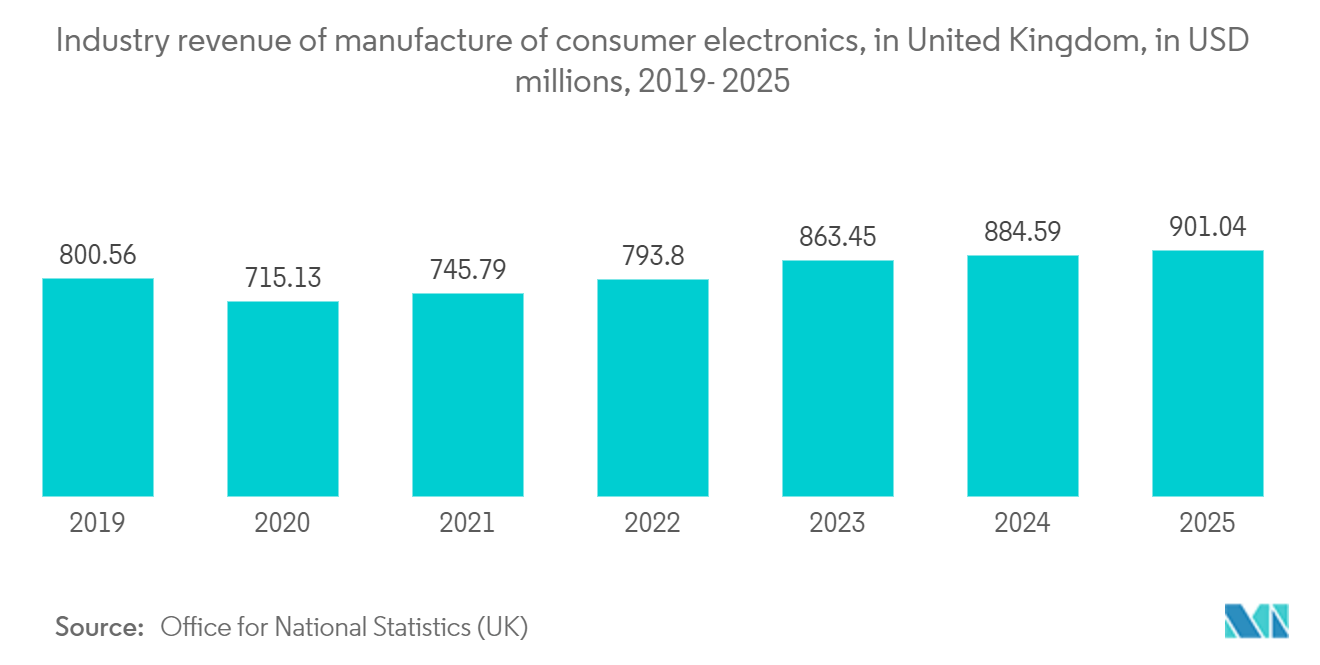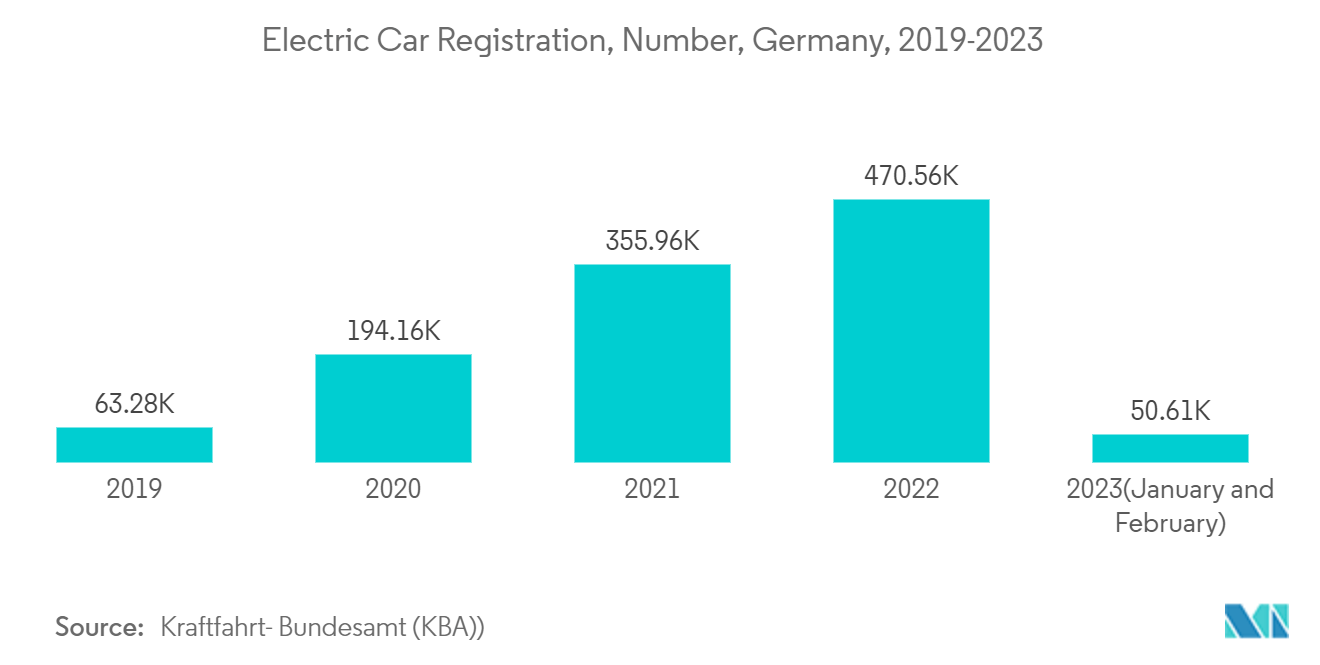Market Trends of Europe Semiconductor Device Industry
Rising Demand for Consumer Electronics Goods
- The rising proliferation of smartphones, feature phones, and tablets is driving the market. As per Accenture, the first 4G LTE network launched in Sweden in 2009, setting a trajectory within Europe for exponential growth within wireless telecommunications. Currently, 5G networks and technology are further revolutionizing wireless communications by transforming existing market sectors and industries. As per the company, between 2021 and 2025, 5G will drive up to EUR 2.0 trillion in total new sales across all major industries in the European economy.
- According to the World Economic Forum, the EU aims to raise its market share in the global semiconductor industry from 9% to 30% by 2030. In order to prevent more supply chain disruptions and ultimately become less reliant on foreign companies, the European Union is supporting further investments in the semiconductor sector, which is augmenting the market growth.
- For instance, the European Commission, which serves as the EU's executive branch, announced a new European Chips Act in February 2022 that will allow for an additional EUR 15 billion (USD 17.11 billion) in public and private investments until 2030 to give manufacturers the resources they need to succeed in Europe, such as investments in R&D. Due to this, it is anticipated that such government assistance will increase demand for the local market.
- Similarly, Europe is significantly adopting Global Warming Potential (GWP) and natural refrigerants in air conditioning and heat pump systems compared to other regions. Under the European F-gas Regulation, the amount of HFC (hydrofluorocarbon) placed annually on the EU market is capped. The HFC quota is then progressively reduced. As part of this, the period 2018 - 2021 represents a critical phase in this progress. The F-gas Regulation needs a substantial cut in the usage of HFCs between 2015 and 2030 to mitigate climate change. This has caused a significant price rise in HFC refrigerants in the last few years. Such changes in the regulations by various regulatory bodies globally are expected to increase the demand for GVAC systems, thereby increasing the need for semiconductor devices in the market.

Automotive Sector to hold a Significant Market Share
- Semiconductor chips have become an essential component of modern vehicles due to their broad application in numerous vehicle operations. Chips used in automobiles can range from basic components comprising a single transistor to elaborate integrated circuits managing a complex system. Chips, for example, can be found in car LED lighting. Every diode inside an LED light unit is a chip that emits light. LED headlights alone account for a large number of chips in current vehicles. To function, the headlights require control devices as well.
- The growing requirement for greater safety and advanced driver assistance systems (ADAS) in automobiles has accelerated semiconductor demand. Semiconductor technologies provide intelligent features such as backup cameras, adaptive cruise control, blind-spot recognition, lane change aid, airbag deployment, and emergency braking systems. ADAS also includes ultrasonic sensors for short-range functions like parking assist a wide range of sensors, including image and camera sensors for vision-based features and radar and lidar sensors for object recognition in low-light or foggy conditions.
- For instance, in May 2022, Hitachi Energy announced that it would launch globally RoadPak, its pioneering power semiconductor module for EVs, at PCIM Europe, a leading power electronics trade fair in Nuremberg, Germany. RoadPak is a compact module that uses state-of-the-art silicon carbide (SiC) technology to achieve very high levels of power density for faster charging and reliability over the vehicle's lifetime, along with very low power losses for a long driving range.
- The increasing demand for electric vehicles is expected to open new growth opportunities for the studied market. An increased number of electronic devices and sensors are used in electric vehicles, driving the demand for semiconductor chips. For instance, Ford has recently announced that by mid-2026, 100% of its passenger vehicle range in Europe will be zero-emissions capable, all-electric or plug-in hybrid, and will be completely all-electric by 2030. Such trends depict the huge growth potential of the market owing to the widespread use of discrete power semiconductors in Electric Vehicles.
- To avoid paying high penalties for non-compliance with EU norms, several heavy-duty truck manufacturers in Europe have been investing in integrating novel technology to meet the zero-emission objective from 2025 onwards. The European Union has established carbon-neutrality goals and criteria for heavy-duty vehicles. These include a 15% decrease beginning in 2025 and increasing to 30% by 2030, with zero emissions by 2050.

